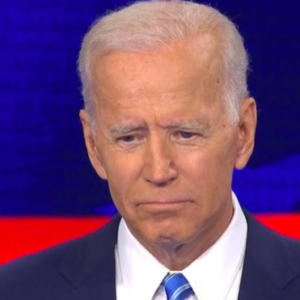It seems like the White House can’t catch a break these days. After months of demoralizing losses, surging prices and questions about the United States’ global standing, Democrats have flailed — but ultimately failed — to find their footing before it’s too late to avoid electoral collapse this fall.
You don’t have to look far to see that the efforts have been less than inspiring.
The most recent wave of primary votes cast in states like California, Iowa and Alaska showed hints that Democrats’ cause for concern is far from abating. Local elections in liberal strongholds also held bad vibes. A far-left district attorney was voted out of office in San Francisco and a conservative is threatening to win the mayoral race in Los Angeles.
But poor election results aren’t the disease; they’re just symptoms. The root of the problem lies in the substance of the administration’s policies.
On the global stage, careless comments amid high-profile overseas remarks have repeatedly put the diplomatic community on edge and forced the White House to clarify or walk back seemingly platform-busting statements about Russia and China. The State Department, no doubt, would appreciate it if President Biden would stick a bit more closely to the script.
Fair or not, there is also the matter of Biden’s age. One of Washington’s biggest questions since the 2020 election has been whether Biden will run for re-election. Biden himself hints that he will. Most experts expect the same. But after the last year, it’s less clear that Democrats will fall in line if he does. Just ask Rep. Alexandria Ocasio-Cortez, who recently refused to say whether or not she’d support a Biden re-election bid.
I’ve written in the past about my belief that the root of the administration’s woes is policy rather than some kind of obscure blip in polling or a rare convergence of circumstances that obscure the reality of the party’s achievements. It bears repeating here.
Poor polling persists because the president’s agenda is stuck in the mud, lacking in focus, and too diffuse to resonate with rank-and-file voters. Ardent progressives find the administration too timid and hesitant on everything from student loan forgiveness to gun control. The center-left sees inconsistent messaging and wandering policy focus and laments the administration’s inability to move the needle. Moderates who may have switched parties to vote against Donald Trump now see that Biden’s most substantial policy wins — like the Build Back Better plan — have turned sour and are fueling runaway inflation and broad economic unease. And Republicans, well, I don’t have to tell you where they stand.
So what’s the prescription to remedy all this pain? No one in the White House seems to know. And even if they did, the odds are they couldn’t agree internally on how to move forward.
The experts have sounded alarm bells for months. At what point is it too late to right the ship before November? And if the midterms turn out the way most on both sides of the aisle expect, what does that mean for the remaining two years of Biden’s term in office?
These are huge questions, the answers that will shape America’s political landscape for years to come.
President Biden, reportedly rattled by the realization that his poll numbers are worse than Trump’s, is planning to up his profile with more public appearances in the coming months to turn the tide and reverse his political fortunes.
Democrats must be wondering what achievements he’ll tout during these appearances.

